The grand designer of Grand Design reaches into the past.
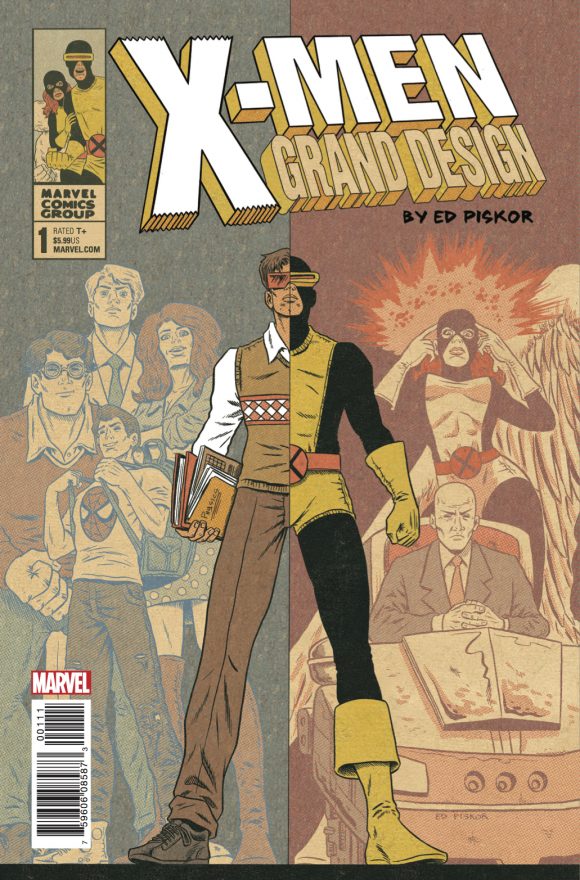
—
UPDATED 7/24/18: The second, two-part installment of Ed Piskor’s X-Men: Grand Design kicks off this week. Dubbed Second Genesis, the series moves full-on into the All-New, All-Different era of the ’70s. Perfect time to re-present this piece. — Dan
—
Ed Piskor’s much anticipated Grand Design, which aims to tell the X-Men’s story from World War II into the ’90s in one coherent plot, debuts 12/20. We frequently ask creators to name their 13 Favorite This or 13 Favorite That and Piskor was game during a recent interview with G.D. Kennedy. (Click here for their discussion on Chris Claremont and Piskor’s X-influences.) But as it got going, it turned into more of a freewheeling conversation, with a lot of insightful riffing.
They never got all the way to 13, but that’s cool. There’s a ton of good stuff in here.
Dig it:
—
G.D. Kennedy: What are your 13 favorite X-Men stories — other than Days of Future Past and other low-hanging fruit?
Ed: Right. OK, in no particular order:
— The issue that introduces Juggernaut (Uncanny X-Men #12) is one that people should look at because it’s a story that’s broken down by (Jack) Kirby and the finished pencil art was by Alex Toth. It’s two masters of cartooning working on one thing. It’s worth a look.

—
— There’s an issue that (Chris) Claremont and (John) Byrne did right after Death of Phoenix and before Days of Future Past, called Elegy (Uncanny X-Men No. 138), where they examine the entire X-Men saga up to that point. Every page covers five, six issues. You see every villain up through the death of Phoenix. That’s a major inspiration for this work, man. The funeral of Jean Grey is how it starts and then Cyclops’ first person reflecting on the entire saga.

—
— I grew up with the X-Tinction Agenda. I love it. I don’t like to have guilty pleasures but I couldn’t defend it if you were to come at me academically about it. That was good because also you get a little Rob Liefeld and a little Jim Lee. It was clear that Marvel put their best people on those books. You know, the most sexy, the most exciting.
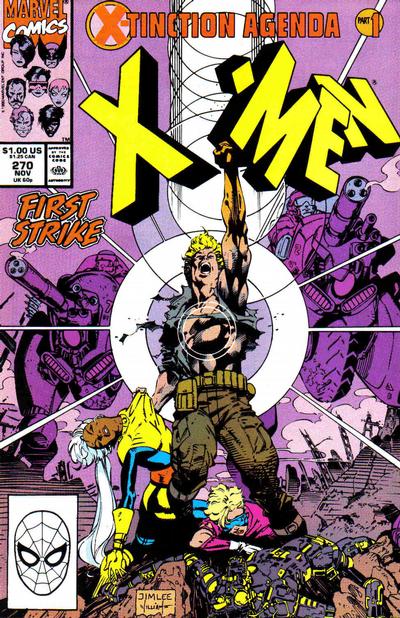
—
— There was an X-Men Annual (# 9), the one with Storm on the cover with Thor’s hammer or whatever.
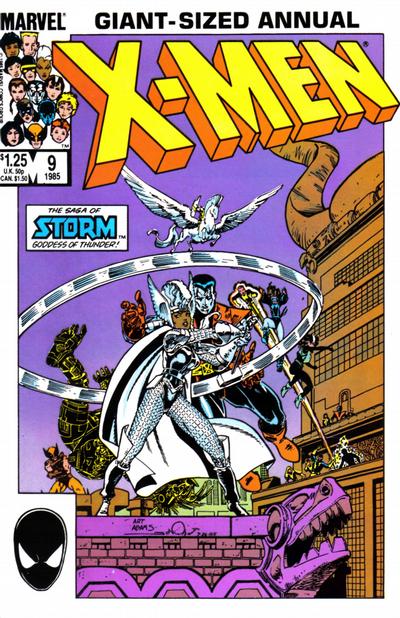
—
— It’s weird, man, because I kind of count X-Men # 94 to #137 as a piece. When you read it all together, it works, man.
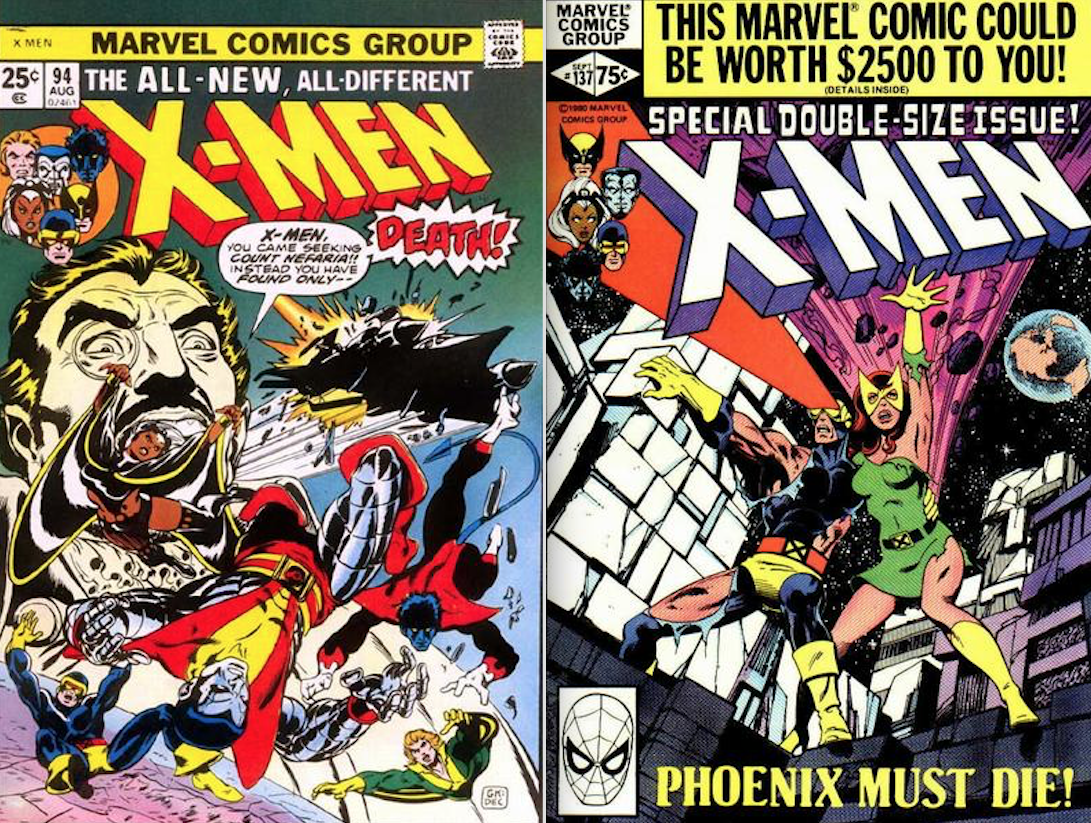
—
— I’m an Art Adams fan so I liked the New Mutants Spring Special or Summer Special (New Mutants Special Edition #1). On a panel, some guy comes up and was like, “I wonder who’s your favorite X-Man?” and everybody’s going through their thing and I was, like, “Longshot because I’m an Art Adams fan.”
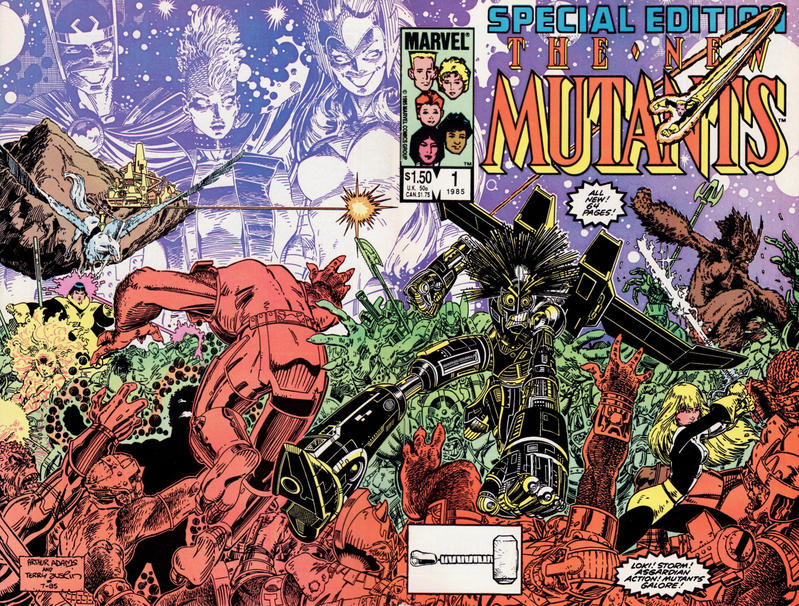
—
G.D.: My guilty pleasure was Longshot. I bought that trade probably 1990 or ’91 with dimes my grandmother gave me. Just like a big bag of dimes and I counted that out on the counter, and cashier was, like, “Are you fucking kidding me?” (Both laugh.)
Ed: It’s a kid, man, you know what I mean? Like, I remember doing that with pennies… not just pennies, but, you know, saving a bunch of junk money for a GI Joe Special Missions trade. Cost 6 dollars! I found it in couch cushions!
G.D.: That was one of the first times I recall feeling like comics didn’t have to be serialized monthly.
Ed: Yeah. With my comic, I have the chance to just strip out the Jim Shooter mandate that every comic is somebody’s first so you have to — you know, when you binge Frank Miller’s Daredevil or something, you’ve gotta understand that there’s a couple pages where they’re gonna talk about his origins every issue.
G.D.: I got the Omnibus just recently and with every issue, you just flip through the first three pages…
Ed: It’s a great idea, you know, because somebody who just wondering what he bought just needs to know what’s up. But I can strip that out. You know, I only have to have Wolverine tell people he’s the best there is at what he does one time. I only need Rogue to cry about not being able to touch people one time. (G.D. laughs.) So that’s it.
G.D.: Any other stories that stand out for you?
Ed: I’m a big Jim Steranko guy so you could break each Steranko issue into its own thing. The Barry Windsor-Smith issues. There were two and then there was the Lady Deathstrike issue that shouldn’t be confused with.
G.D.: I remember Forge and Storm on the cover very nicely.
Ed: Yeah. It was colored less traditional. Like, it was line art but then they colored underneath. It’s fantastic, visually at least. Frankly, when he was just Barry Smith, he did an issue, with Blastaar. And then famously, there’s a legend that he just drew it on, like, a park bench, just chillin’ outside of Marvel’s office. It was awesome. I actually don’t build that issue into my comic at all because it really is standalone and isn’t necessary for the greater narrative but it is fun to look at, nonetheless.

G.D.: Are there any issues or story arcs that you’re particularly not fond of?
Ed: There must be but in a way it would be, like, my least favorite, meaning I still like ’em for what they are because I understand what they are. It’s pulp! In kind of the best sense of that word.
OK… I do. It’s come to me. I think that Roy Thomas and Neal Adams are about as incongruous a writer-and-artist team that you can ever come up with in professional comics. And there’s evidence in some of those issues… There’s like maybe a 17-page Neal Adams/Roy Thomas story that’s immaculate to look at and then there’ll be a backup with, like, the origin story of (a random X-Man). … You see the difference between Neal and what was the rank and file of the day. But Roy Thomas’ writing was rank and file of the day mixed with this very lush…
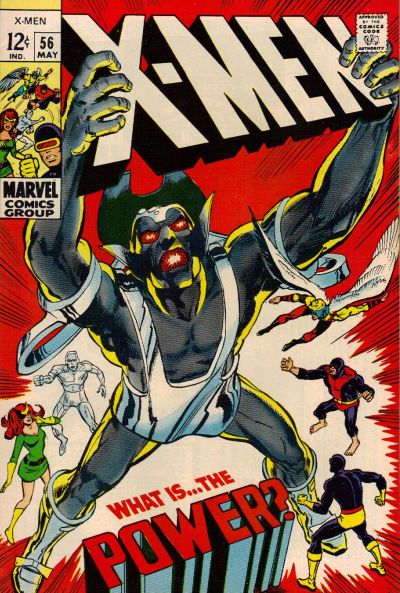
G.D.: So it looks much more average and you see that Neal Adams just elevated it that much.
Ed: Yeah. But what I’m saying is in the early days of comics, I only had a problem with the writing, because it was very insulting to a kid, in my opinion. You know, there are writers like Maurice Sendak in these picture books that have stood the test of time. I just feel like they really respect children’s intellect and their ability to comprehend and they don’t talk down to a kid. But I absolutely remember as a boy feeling insulted by… I’m not that stupid!
G.D.: That was one of the things I liked about the early X-Men. They actually felt like they were a little bit bigger, dealing with some bigger stuff.
Ed: Yeah, it’s really interesting when I read the Kirby X-Men, with Stan, because you very clearly see that, you know, they had success with Fantastic Four, so it’s like, “OK, let’s have five. Let’s make the blond a redhead.”
The Thing/the Beast. He was the same. Like, he was a gruff, uh . . . dummy, basically. He talked with the same kind of colloquialisms and New York talk and stuff. He called girls “dames” and things like that. Then, all of a sudden, it’s like, “Let’s flip him.” It was very abrupt.
There was also some things that I did not include (in Grand Design). I guess times were different and you know, but it’s a high school and they’re called teenagers… and Professor X is, like, lamenting his love for Jean Grey that he could never express outwardly. It’s only one thought bubble and that was rapidly abandoned. And I say that it must be different times and stuff.
—
X-Men: Grand Design #1 is out 12/20.
MORE: Piskor talks Claremont and classic X-Men. Click here.

Trackbacks/Pingbacks